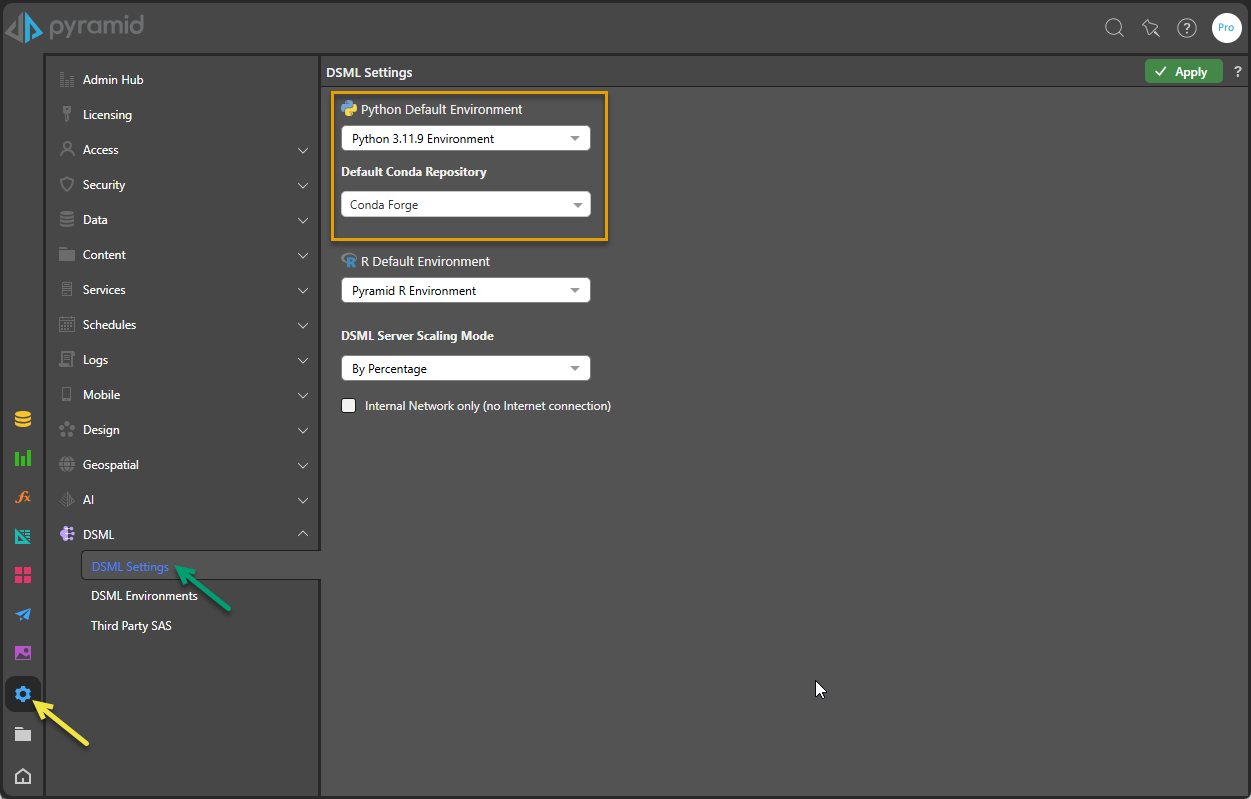Configure your Python and R environments for use when creating scripts in Pyramid.
DSML Settings page
Administrators can access the DSML Settings page in the Admin Console from DSML > DSML Settings:

Python Scripting Environment
The Python scripting environment options (orange highlight) are:
- Python Default Environment: Select the Python environment to act as the default for users when creating scripts in the system.
- Default Conda Repository: Specify the Conda repository to use when you add a new environment. By default, Conda-Forge is selected here, This setting allows you to switch from Conda-Forge to the Anaconda Repository. meaning that the environment bootstraps its Python and any essential libraries from the Conda-Forge repository.
Changing the Default Conda repository affects the repository used when you add a package from the Default repository.
If you reinstall from the DSML environment page after you have changed the Default Conda repository, the reinstall process will use the newly selected repository.
Using the Anaconda repository may require independent licensing from Anaconda.
R Scripting Environment
- R Default Environment: Select which R environments will act as the default for users when creating scripts in the system.
DSML Server Scaling Mode
From the DSML Server Scaling Mode drop-down, select how the cluster should allocate resources to each scripting environment. The selected mode changes the operation of the scripting environment editor:
- Manual: The admin manually sets which AI servers will host which environments.
- By Percentage: This "automatic" option lets the admin assign a percentage coverage that each environment should have across all AI servers in the cluster and lets the engine automatically assign resources accordingly.
Typically, if the cluster is built manually, with additional nodes added on an irregular basis, the manual model is preferred - because admins are given deep control for how to allocate Python and R resources. If the cluster shrinks and grows automatically (with a Kubernetes deployment, for example), then the manual approach is infeasible - and the automatic approach must be used instead.